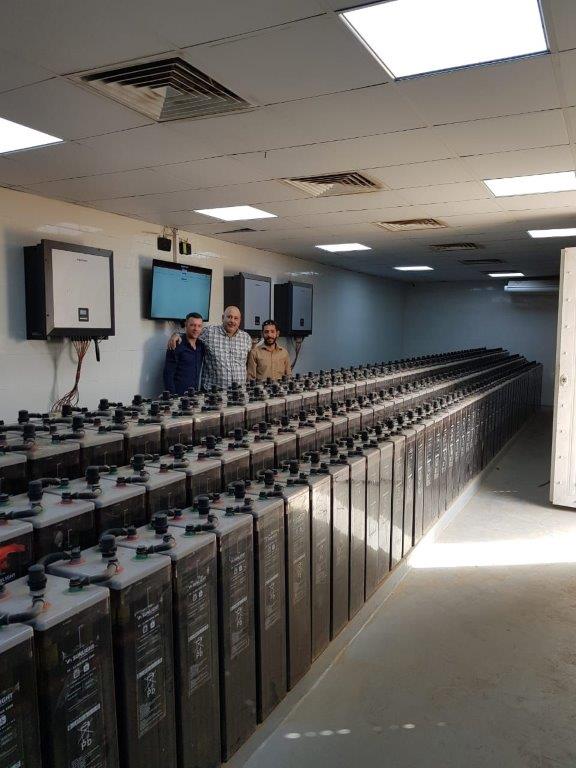- Home
- Technology Solutions
- Market Applications
- Services
- Engineering, Procurement & Contraction (EPC)
- Solar Projects Development (include feasibility studies)
- Construction & Projects Management
- Independent Power Production (IPP) (include investment)
- Investment & Financing
- Operation & Maintenance (O&M)
- Measurement
- Industrial Roof
- Independent Power Production (IPP) (include investment)
- Projects
- About Us
- News
- Celebration of the national day of Switzerland
- Interview on Al-Hadath Satellite Channel
- Reward from Emisal
- Schlumberger 0.5 MWp Car Shade Testing & Commissioning
- Sky News Report
- Swiss Ambassador's Residence Website
- Hadith Al Saa’a: the crisis of investment in renewable energy between investors and the government
- Installation at Kandil Steel Kama II
- Solar Expo & Forum Exhibition
- The Solar Show MENA 2020
- Careers
- Contact Us
Electric Storage
Electric storage is the capture of energy produced at one time for use at a later time. A device that stores energy is generally called an accumulator or battery. Energy comes in multiple forms including radiation, chemical, gravitational potential, electrical potential, electricity, elevated temperature, latent heat and kinetic. Energy storage involves converting energy from forms that are difficult to store to more conveniently or economically storable forms.
Some technologies provide short-term energy storage, while others can endure for much longer. Bulk energy storage is currently dominated by hydroelectric dams, both conventional as well as pumped.
Common examples of energy storage are the rechargeable battery, which stores chemical energy readily convertible to electricity to operate a mobile phone, the hydroelectric dam, which stores energy in a reservoir as gravitational potential energy, and ice storage tanks, which store ice frozen by cheaper energy at night to meet peak daytime demand for cooling. Fossil fuels such as coal and gasoline store ancient energy derived from sunlight by organisms that later died, became buried and over time were then converted into these fuels. Food (which is made by the same process as fossil fuels) is a form of energy stored in chemical form. The Llyn Stwlan dam of the Ffestiniog Pumped Storage Scheme in Wales. The lower power station has four water turbines which can generate a total of 360 MW of electricity for several hours, an example of artificial energy storage and conversion

